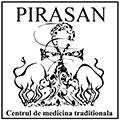Also called benign prostatic hyperplasia (BPH), prostate adenoma is a male disease affecting most men over the age of 50. It causes an abnormal enlargement of the prostate, a gland located under the urinary bladder and which surrounds the urethra. The pathological alteration in the prostate size is benign. Cancerous formations of the prostate are usually situated in the peripheral area of the gland.
Structure alterations of the prostate will exert pressure upon the urethra, making the miction more difficult. Therefore the urine flow will become thinner; the urination is repeatedly interrupted and at the end of the miction the urine is eliminated as mere drops. Urination is accompanied by pain and burning sensation. The frequency of urination increases especially during night time (nocturia). The urination sensation becomes stronger, being perceived by the patient as pressing need to urinate. Some people may involuntary eliminate small amounts of urine. As the prostate grows larger, the urinary bladder does not void completely any more, leading to an increased risk of infections in the urinary tract. If lesions occur in the urinary tract hematuria may be present (blood in urine).
Failing to treat the prostate adenoma will lead to infections of the urinary tract, acute urine retention, renal calculus, renal failure.
Among others, the prostate also performs functions in the male reproductive system, by secreting a whitish liquid (one of the sperm components), an enzyme changing the testosterone into dihydrotestosterone (a male hormone with a major influence in the activity of the prostate) and a substance with anti microbial properties. When there are alterations in the size of the gland, these functions are altered, too, which will lead to sexual dynamic disorders.
Causes
The prostate is also responsible with toxins and dead cells elimination. Under the action of various factors, such as renal infections, sexual transmitted diseases, sedentary lifestyle, prolonged exposure to low temperatures etc., the ways to eliminate the dead cells and the toxins are obstructed. The prostate will alter its form and structure as a result of these toxins and cell residues deposits.
Treatment
Prostate adenoma treatment brings the prostate to it’s normal size by eliminating the accumulated cellular residues and toxins. In order to achieve this objectives all the local metabolic exchanges must be intensified and the ways of eliminating the toxins must be unblocked. By increasing the supply of oxygen the elimination of toxins and dead cells is accelerated.

